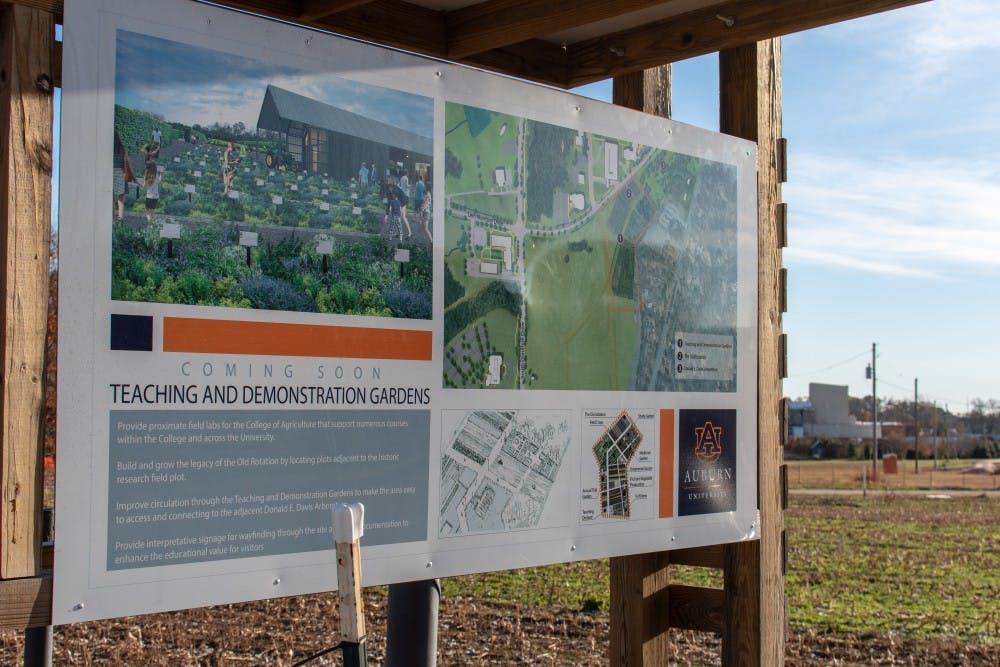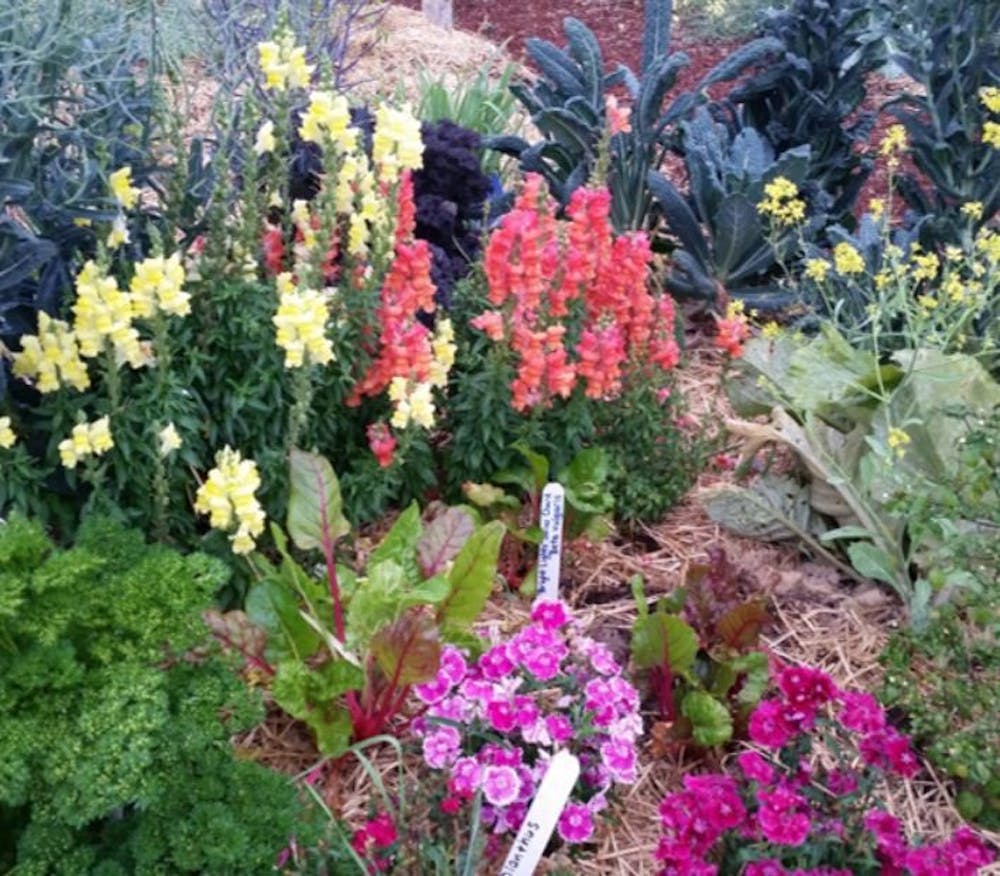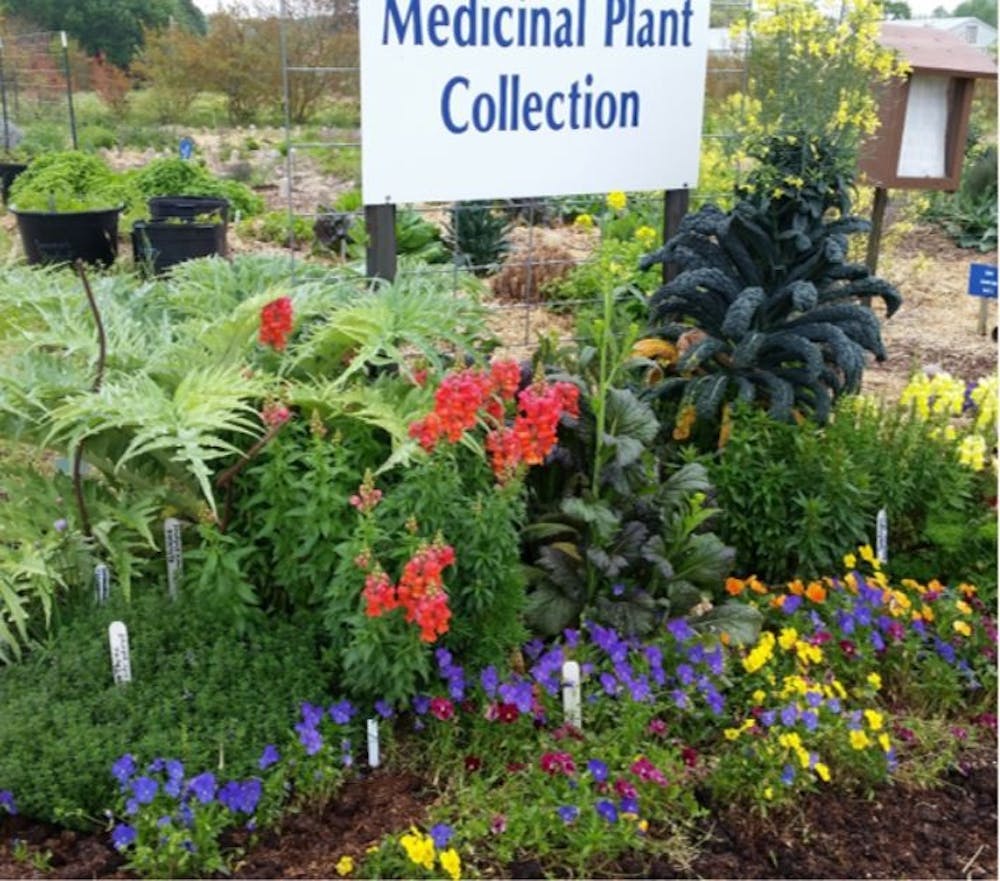For years, Auburn’s Medicinal Plant Garden was an oasis.
The tiny wonderland, just southeast of the Auburn RV Field, held a collection of about 100 medicinal plants, maintained with care and love by curator Tia Gonzalez and a team of volunteers. The vibrant rows of flowers, herbs and shrubs attracted communities of honeybees, frogs and birds. Entomologists flocked to the garden to study its rich tapestry of benevolent bugs, some of which were hard to find anywhere else in Lee County. Master gardeners and school groups came by for tours.
That’s all gone now.
The space where the garden once flourished has been scraped clean, covered in dirt and gravel as a parking lot for the new Jay and Susie Gogue Performing Arts Center. But Gonzalez said the garden will soon be reborn bigger and better than before as part of the College of Agriculture’s new Teaching and Demonstration Garden.
“There will be multiple gardens,” Gonzalez said. “It will be crisscrossed with walking paths and bike paths that students and the community can use. So not only will it be interesting if you’re interested in agriculture, but it’s going to be open space you can use. That’s the big picture.”
The master plan for the new teaching garden envisions a collection of plots connecting to the south end of the Donald E. Davis Arboretum. The medicinal garden, the “Old Rotation” cotton experiment, crop gardens, and other projects will all be part of the new plan.

“I think we have more than double the space we had last time. So that part is good, but it’s on a highly eroded soil on a slope, so we’re going to have to deal with those issues more than we did at the other site,” said Dennis Shannon, a professor at the College of Agriculture’s department of crop, soil and environmental sciences.
The first seeds of the garden were sewn more than a decade ago when Shannon decided to research medicinal plants.
“I asked for a little piece of ground on the agronomy farm in what was then the crops garden, where I could just plant out different plants because I wasn’t familiar with them, and see how they were adapted and, you know, as a possible source of material if I decided to do research on them,” Shannon said.
The goal of that research, Gonzalez said, was to see if Alabama farmers could sell high-value medicinal crops like turmeric on their land.
The research ended, but something unexpected happened: more and more people were interested in seeing the plant collection. So Gonzalez, who is a landscape designer, partnered with Shannon to turn the project into a full public garden.
It was difficult at first. The rows of plants were far too close together to lead tours effectively, and the repetitive rows of identical shrubs weren’t very attractive. Gonzalez decided to mix things up by planting many different species in clusters, boosting the diversity and transforming the space into a real garden.

Colorful medicinal plants at the garden were arranged in diverse clusters.
It was a big change. Now, the garden was more open to visitors, who could come for tours or plant sales without stumbling over each other or the plants. Plus, the garden had suddenly acquired some new inhabitants.
“The beneficial insect population increased incrementally,” Gonzalez said. “Bugs are good, bugs are your friend. And we also started getting birds and mammals and reptiles in the garden as we increased the diversity. It was very interesting.”
Keeping the garden humming along was a tough task — not least because its operation receives no funding from the University.
“Right now, its operating 100 percent on donations,” Shannon said. “My department used to contribute $10,000 or $12,000 a year, but that’s stopped. It’s all donations.”
“We don’t have any funding from the University. The support we get from the university is land. The rest is up to us,” Gonzalez said.
She suspects she’ll need volunteers again soon. But for now, she is focused on an expanded vision for what the new garden will bring to Auburn.
“I don’t want our garden to be just for people interested in medicinal plants,” Gonzalez said. “If you step back and look at the University as a whole, there are few majors within the University that could not use the garden in some way.
“I want to group our new garden by geography, so you can take a trip around the world by walking through the garden. You can teach history through plants and make it more interesting, make it more engaging.”
At the core, she said the new garden would be about connection — connection to all academic disciplines, to the community and between people and their environment.
“It shows you what you can do in your own yard,” she said. “It’s important to be a good example of environmental stewardship on every level. You can easily make the mental jump from medicinal plants to physical health, but more importantly, you should be able to make the jump to medicinal plant gardens to environmental health.”
Do you like this story? The Plainsman doesn't accept money from tuition or student fees, and we don't charge a subscription fee. But you can donate to support The Plainsman.





